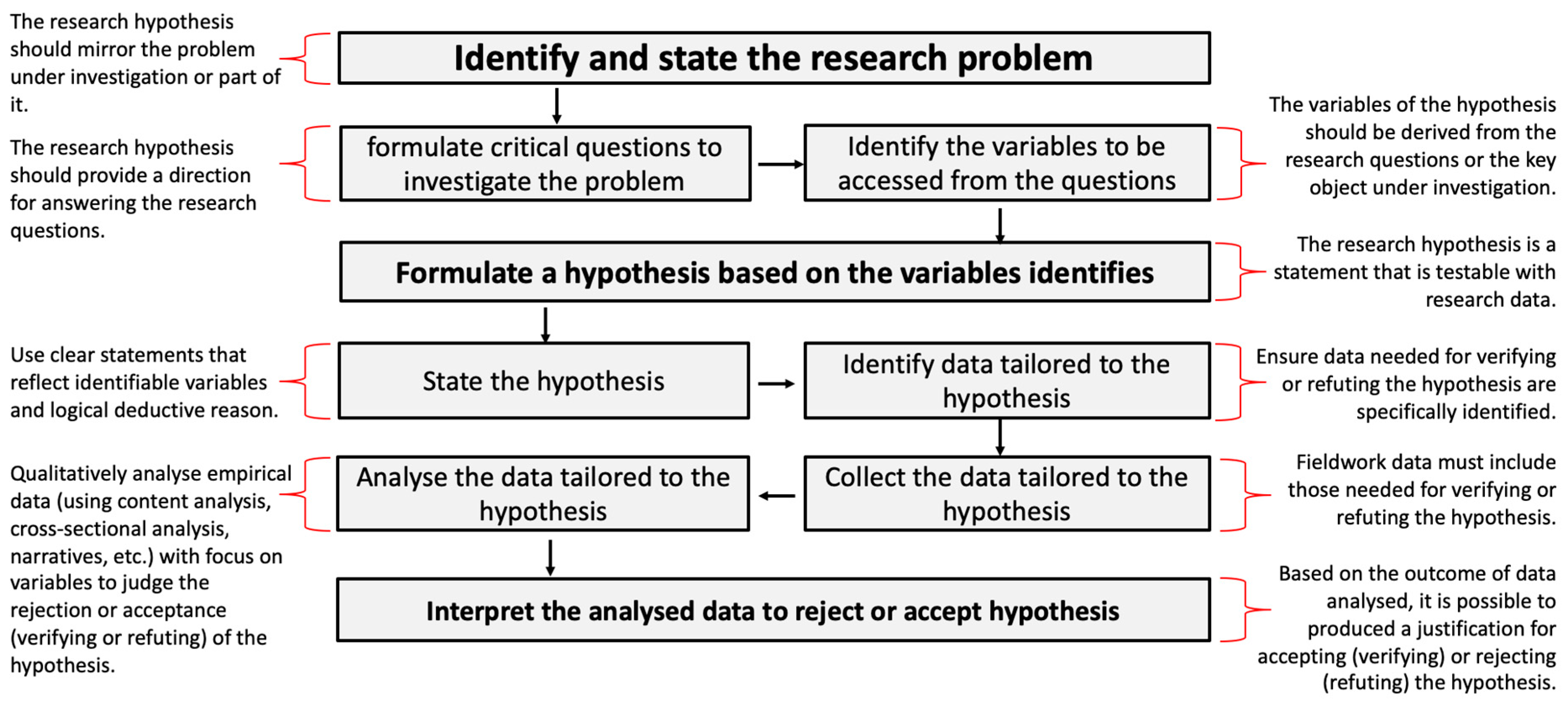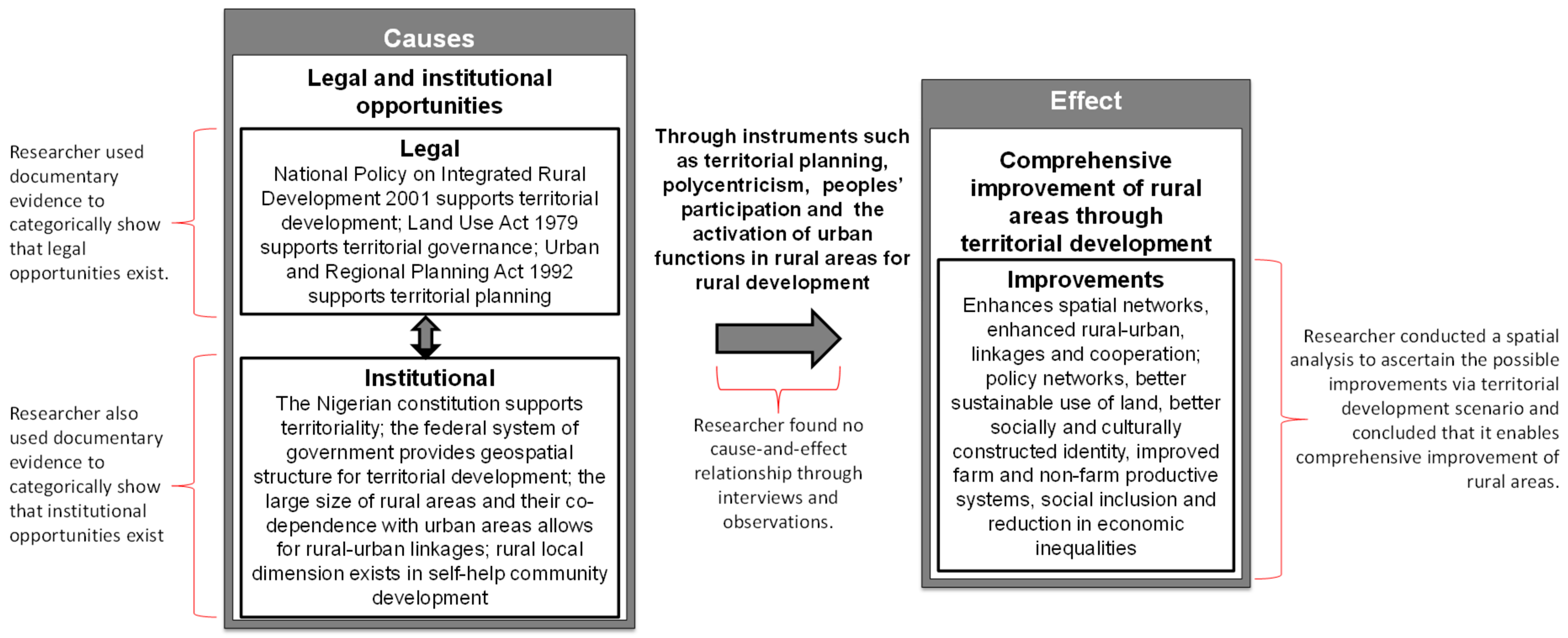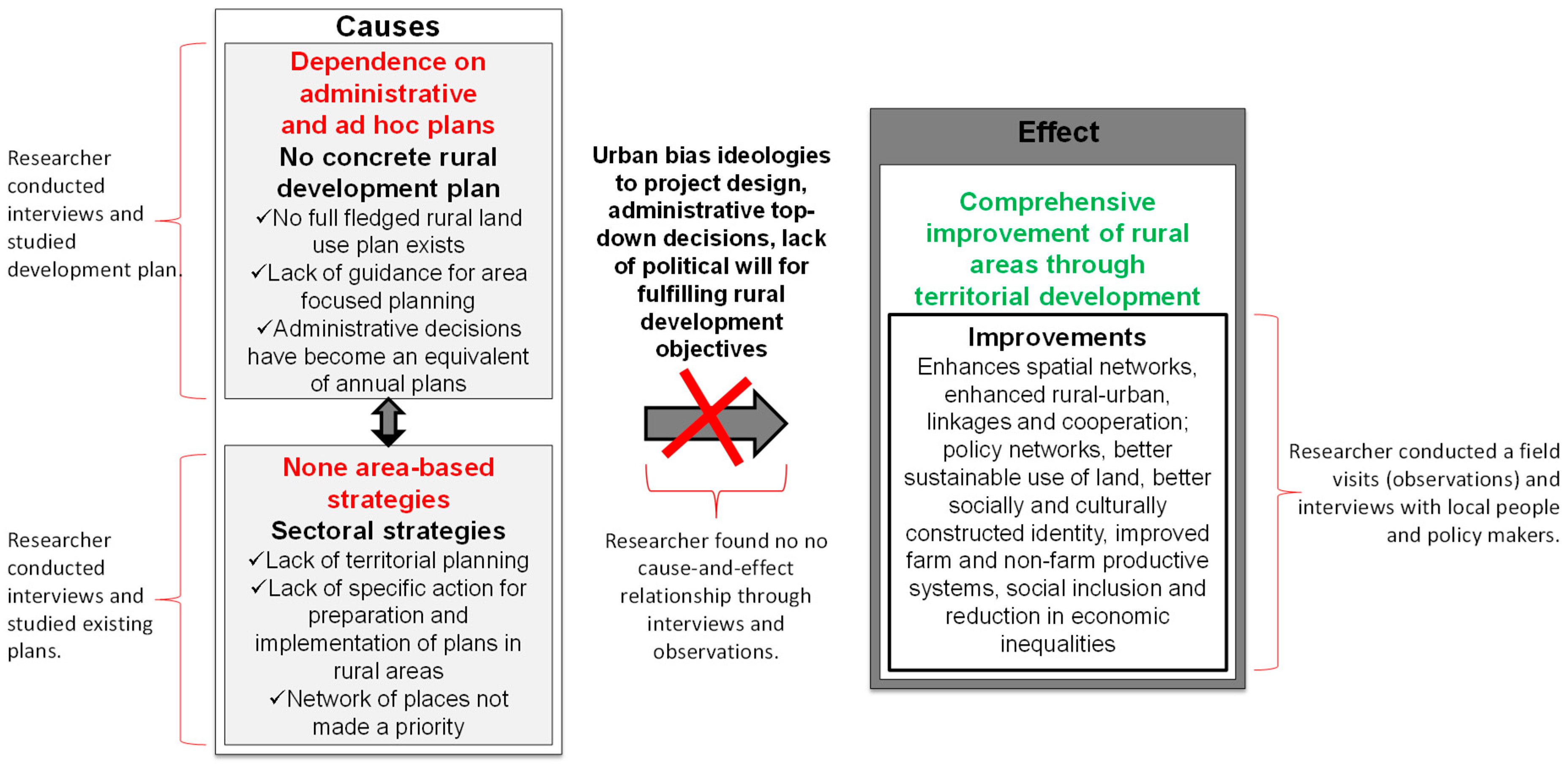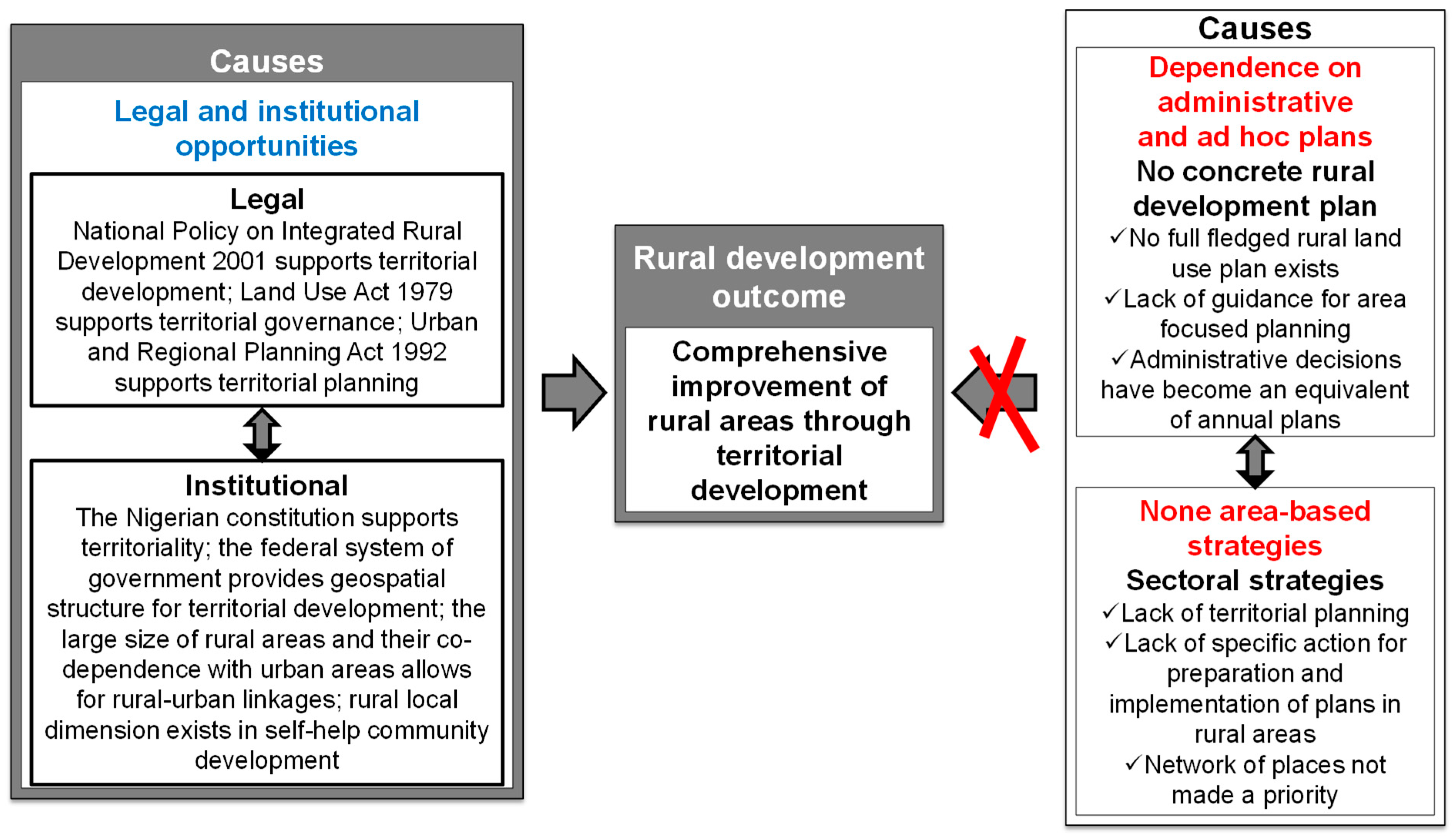Visually Hypothesising in Scientific Paper Writing: Confirming and Refuting Qualitative Research Hypotheses Using Diagrams
Abstract
1. Introduction
2. Overview of Visual Communication and Post-Positivist Research
Visual Communication in Post-Positivist Qualitative Research
3. Understanding Qualitative Research (and Hypotheses): Types, Notions, Contestations and Epistemological Underpinnings
3.1. What is Qualitative Research?
3.2. Types of Qualitative Research and Their Epistemological Underpinnings
3.3. What Is a Research Hypothesis? Can It Be Used in Qualitative Research?
3.4. Analogical Arguments in Support of Using Hypotheses in Qualitative Research
3.5. Can a Hypothesis Be “Tested” in Qualitative Research?
4. The Process of Developing and Using Hypotheses in Qualitative Research
“Begin a research study without having to test a hypothesis. Instead, it allows them to develop hypotheses by listening to what the research participants say. Because the method involves developing hypotheses after the data are collected, it is called hypothesis-generating research rather than hypothesis-testing research. The grounded theory method uses two basic principles: (1) questioning rather than measuring, and (2) generating hypotheses using theoretical coding.”
4.1. Formulating the Qualitative Research Hypothesis
- The qualitative hypothesis should be based on a research problem derived from the research questions.
- It should be supported by literature evidence (on the relationship or association between variables).
- It should be informed by past research and observations.
- It must be falsifiable or disprovable (see Popper [77]).
- It should be analysable using data collected from the field or literature.
- It has to be testable or verifiable, provable, nullifiable, refutable, confirmable or disprovable based on the results of analysing data collected from the field or literature.
4.2. Refuting or Verifying a Qualitative Research Hypothesis Diagrammatically (with Illustration)
“A core development concern in Nigeria is the magnitude of challenges rural people face. Inefficient infrastructures, lack of employment opportunities and poor social amenities are some of these challenges. These challenges persist mainly due to ineffective approaches used in tackling them. This research argues that an approach based on territorial development would produce better outcomes. The reason is that territorial development adopts integrated policies and actions with a focus on places as opposed to sectoral approaches. The research objectives were to evaluate rural development approaches and identify a specific approach capable of activating poverty reduction. It addressed questions bordering on past rural development approaches and how to improve urban-rural linkages in rural areas. It also addressed questions relating to ways that rural areas can reduce poverty through territorial development…”[16], p. 1
“Nigeria has legal and institutional opportunities for comprehensive improvement of rural areas through territorial development. However, due to the absence of a concrete rural development plan and area-based rural development strategies, this has not been materialized”.
- Proposition 1:Legal and institutional opportunities that can lead to comprehensive improvement of rural areas through territorial development exist in Nigeria.
- Proposition 2:However, due to the absence of a concrete rural development plan and area-based rural development strategies, this has not been materialized.
- Independent variables: legal and institutional opportunities; incessant structural changes in its political history; and policy negligence.
- Dependent variable: comprehensive rural improvements through territorial development.
5. Discussion and Conclusion
Funding
Acknowledgments
Conflicts of Interest
References
- Friesen, J.; Van Stan, J.T.; Elleuche, S. Communicating Science through Comics: A Method. Publications 2018, 6, 38. [Google Scholar] [CrossRef]
- Hammersley, M. The Dilemma of Qualitative Method: Herbert Blumer and the Chicago Tradition; Routledge: London, UK, 1989; ISBN 0-415-01772-6. [Google Scholar]
- Ulichny, P. The Role of Hypothesis Testing in Qualitative Research. A Researcher Comments. TESOL Q. 1991, 25, 200–202. [Google Scholar] [CrossRef]
- Bluhm, D.J.; Harman, W.; Lee, T.W.; Mitchell, T.R. Qualitative research in management: A decade of progress. J. Manag. Stud. 2011, 48, 1866–1891. [Google Scholar] [CrossRef]
- Maudsley, G. Mixing it but not mixed-up: Mixed methods research in medical education (a critical narrative review). Med. Teach. 2011, 33, e92–e104. [Google Scholar] [CrossRef] [PubMed]
- Agee, J. Developing qualitative research questions: A reflective process. Int. J. Qual. Stud. Educ. 2009, 22, 431–447. [Google Scholar] [CrossRef]
- Yin, R.K. Qualitative Research from Start to Finish, 2nd ed.; Guilford Publications: New York, NY, USA, 2015; ISBN 9781462517978. [Google Scholar]
- Alvesson, M.; Sköldberg, K. Reflexive Methodology: New Vistas for Qualitative Research; Sage: London, UK, 2017; ISBN 9781473964242. [Google Scholar]
- Geertz, C. The Interpretation of Cultures: Selected Essays; Basic Books: New York, NY, USA, 1973; ISBN 465-03425-X. [Google Scholar]
- John-Steiner, V.; Mahn, H. Sociocultural approaches to learning and development: A Vygotskian framework. Educ. Psychol. 1996, 31, 191–206. [Google Scholar] [CrossRef]
- Zeidler, D.L. STEM education: A deficit framework for the twenty first century? A sociocultural socioscientific response. Cult. Stud. Sci. Educ. 2016, 11, 11–26. [Google Scholar] [CrossRef]
- Koro-Ljungberg, M. Reconceptualizing Qualitative Research: Methodologies without Methodology; Sage Publications: Los Angeles, CA, USA, 2015; ISBN 9781483351711. [Google Scholar]
- Chigbu, U.E. The Application of Weyarn’s (Germany) Rural Development Approach to Isuikwuato (Nigeria): An Appraisal of the Possibilities and Limitations. Unpublished Master’s Thesis, Technical University of Munich, Munich, Germany, 2009. [Google Scholar]
- Ntiador, A.M. Development of an Effective Land (Title) Registration System through Inter-Agency Data Integration as a Basis for Land Management. Master’s Thesis, Technical University of Munich, Munich, Germany, 2009. [Google Scholar]
- Sakaria, P. Redistributive Land Reform: Towards Accelerating the National Resettlement Programme of Namibia. Master’s Thesis, Technical University of Munich, Munich, Germany, 2016. [Google Scholar]
- Chigbu, U.E. Territorial Development: Suggestions for a New Approach to Rural Development in Nigeria. Ph.D. Thesis, Technical University of Munich, Munich, Germany, 2013. [Google Scholar]
- Miller, K. Communication Theories: Perspectives, Processes, and Contexts, 2nd ed.; Peking University Press: Beijing, China, 2007; ISBN 9787301124314. [Google Scholar]
- Taylor, T.R.; Lindlof, B.C. Qualitative Communication Research Methods, 3rd ed.; SAGE: Thousand Oaks, CA, USA, 2011; ISBN 978-1412974738. [Google Scholar]
- Bergman, M. Positivism. In The International Encyclopedia of Communication Theory and Philosophy; Wiley and Sons: Hoboken, NJ, USA, 2016; ISBN 9781118766804. [Google Scholar]
- Robson, C. Real World Research. A Resource for Social Scientists and Practitioner-Researchers, 2nd ed.; Blackwell: Malden, MA, USA, 2002; ISBN 978-0-631-21305-5. [Google Scholar]
- Bohn, R.; Short, J. Measuring Consumer Information. Int. J. Commun. 2012, 6, 980–1000. [Google Scholar]
- Zacks, J.; Levy, E.; Tversky, B.; Schinao, D. Graphs in Print, Diagrammatic Representation and Reasoning; Springer: London, UK, 2002. [Google Scholar]
- Merieb, E.N.; Hoehn, K. Human Anatomy & Physiology, 7th ed.; Pearson International: Cedar Rapids, IA, USA, 2007; ISBN 978-0132197991. [Google Scholar]
- Semetko, H.; Scammell, M. The SAGE Handbook of Political Communication; SAGE Publications: London, UK, 2012; ISBN 9781446201015. [Google Scholar]
- Thorpe, S.; Fize, D.; Marlot, C. Speed of processing in the human visual system. Nature 1996, 381, 520–522. [Google Scholar] [CrossRef]
- Holcomb, P.; Grainger, J. On the Time Course of Visual Word Recognition. J. Cognit. Neurosci. 2006, 18, 1631–1643. [Google Scholar] [CrossRef]
- Messaris, P. Visual Communication: Theory and Research. J. Commun. 2003, 53, 551–556. [Google Scholar] [CrossRef]
- Mirzoeff, M. An Introduction to Visual Culture; Routledge: New York, NY, USA, 1999. [Google Scholar]
- Prosser, J. (Ed.) Image-Based Research: A Sourcebook for Qualitative Researchers; Routledge: New York, NY, USA, 1998. [Google Scholar]
- Howells, R. Visual Culture: An Introduction; Polity Press: Cambridge, UK, 2002. [Google Scholar]
- Thomson, P. (Ed.) Doing Visual Research with Children and Young People; Routledge: London, UK, 2009. [Google Scholar]
- Jensen, K.B. (Ed.) A Handbook of Media and Communication Research: Qualitative and Quantitative Methodologies; Routledge: London, UK; New York, NY, USA, 2013. [Google Scholar]
- Bestley, R.; Noble, I. Visual Research: An Introduction to Research Methods in Graphic Design, 3rd ed.; Bloomsbury Publishing: London, UK, 2016. [Google Scholar]
- Wilke, R.; Hill, M. On New Forms of Science Communication and Communication in Science: A Videographic Approach to Visuality in Science Slams and Academic Group Talk. Qual. Inq. 2019. [Google Scholar] [CrossRef]
- Adam, F. Measuring National Innovation Performance: The Innovation Union Scoreboard Revisited. In SpringerBriefs in Economics; Springer: London, UK, 2014; Volume 5, ISBN 978-3-642-39464-5. [Google Scholar]
- Flick, U. An Introduction to Qualitative Research, 5th ed.; Sage: Thousand Oaks, CA, USA, 2006. [Google Scholar]
- Creswell, J.W. Five qualitative approaches to inquiry. Qual. Inq. Res. Des. Choos. Five Approaches 2007, 2, 53–80. [Google Scholar]
- Auerbach, C.F.; Silverstein, L.B. Qualitative Data: An Introduction to Coding and Analysis; New York University Press: New York, NY, USA; London, UK, 2003; ISBN 9780814706954. [Google Scholar]
- Adams, T.E. A review of narrative ethics. Qual. Inq. 2008, 14, 175–194. [Google Scholar] [CrossRef]
- Hancock, B.; Ockleford, B.; Windridge, K. An Introduction to Qualitative Research; NHS: Nottingham/Sheffield, UK, 2009. [Google Scholar]
- Henwood, K. Qualitative research. Encycl. Crit. Psychol. 2014, 1611–1614. [Google Scholar] [CrossRef]
- Glaser, B.G.; Strauss, A.L. Discovery of Grounded Theory: Strategies for Qualitative Research; Routledge: New York, NY, USA; London, UK, 2017; ISBN 978-0202302607. [Google Scholar]
- Ary, D.; Jacobs, L.C.; Irvine, C.K.S.; Walker, D. Introduction to Research in Education; Cengage Learning: Belmont, CA, USA, 2018; ISBN 978-1133596745. [Google Scholar]
- Sullivan, G.; Sargeant, J. Qualities of Qualitative Research: Part I Editorial). J. Grad. Med. Educ. 2011, 449–452. [Google Scholar] [CrossRef]
- Bryman, A. Social Research Methods, 5th ed.; Oxford University Press: Oxford, UK, 2015; ISBN 978-0199689453. [Google Scholar]
- Creswell, J.W. Research Design: Qualitative, Quantitative, and Mixed Methods Approaches, 4th ed.; Sage: Thousand Oaks, CA, USA, 2013; ISBN 978-1452226101. [Google Scholar]
- Taylor, S.J.; Robert, B.; DeVault, M. Introduction to Qualitative Research Methods: A Guidebook and Resource; John Wiley & Sons: Hoboken, NJ, USA, 2015; ISBN 978-1-118-76721-4. [Google Scholar]
- Litosseliti, L. (Ed.) Research Methods in Linguistics; Bloomsbury Publishing: New York, NY, USA, 2010; ISBN 9780826489937. [Google Scholar]
- Berger, A.A. Media and Communication Research Methods: An Introduction to Qualitative and Quantitative Approaches, 4th ed.; Sage Publications: Los Angeles, CA, USA, 2019; ISBN 9781483377568. [Google Scholar]
- Creswell, J.W. Qualitative Inquiry and Research Design: Choosing among Five Approaches, 3rd ed.; SAGE: Thousand Oaks, CA, USA, 2012; ISBN 978-1412995306. [Google Scholar]
- Saunders, B.; Sim, J.; Kingstone, T.; Baker, S.; Waterfield, J.; Bartlam, B.; Burroughs, H.; Jinks, C. Saturation in qualitative research: Exploring its conceptualization and operationalization. Qual. Quant. 2018, 52, 1893–1907. [Google Scholar] [CrossRef]
- Leonard, K. Six Types of Qualitative Research. Bizfluent, 22 January 2019. Available online: https://bizfluent.com/info-8580000-six-types-qualitative-research.html (accessed on 3 February 2019).
- Campbell, D.T. Methodology and Epistemology for Social Science, Selected Papers; University of Chicago Press: Chicago, IL, USA, 1998. [Google Scholar]
- Crotty, M. The Foundations of Social Research: Meanings and Perspectives in the Research Process; Sage Publications: London, UK, 1998. [Google Scholar]
- Gilbert, N. Researching Social Life; Sage Publications: London, UK, 2008. [Google Scholar]
- Kerlinger, F.N. The attitude structure of the individual: A Q-study of the educational attitudes of professors and laymen. Genet. Psychol. Monogr. 1956, 53, 283–329. [Google Scholar]
- Ary, D.; Jacobs, L.C.; Razavieh, A. Introduction to Research in Education; Harcourt Brace College Publishers: Fort Worth, TX, USA, 1996; ISBN 0155009826. [Google Scholar]
- Creswell, J.W. Research Design: Qualitative & Quantative Approaches; Sage: Thousand Oaks, CA, USA, 1994; ISBN 978-0803952553. [Google Scholar]
- Mourougan, S.; Sethuraman, K. Hypothesis Development and Testing. J. Bus. Manag. 2017, 19, 34–40. [Google Scholar] [CrossRef]
- Green, J.L.; Camilli, G.; Elmore, P.B. (Eds.) Handbook of Complementary Methods in Education Research; American Education Research Association: Washington, DC, USA, 2012; ISBN 978-0805859331. [Google Scholar]
- Pyrczak, F. Writing Empirical Research Reports: A Basic Guide for Students of the Social and Behavioral Sciences, 8th ed.; Routledge: New York, NY, USA, 2016; ISBN 978-1936523368. [Google Scholar]
- Gravetter, F.J.; Forzano, L.A.B. Research Methods for the Behavioral Sciences, 4th ed.; Wadsworth Cengage Learning: Belmont, CA, USA, 2018; ISBN 978-1111342258. [Google Scholar]
- Malterud, K. Qualitative research: Standards, challenges, and guidelines. Lancet 2001, 358, 483–488. [Google Scholar] [CrossRef]
- Malterud, K.; Hollnagel, H. Encouraging the strengths of women patients: A case study from general practice on empowering dialogues. Scand. J. Public Health 1999, 27, 254–259. [Google Scholar] [CrossRef]
- Flyvbjerg, B. Five misunderstandings about case-study research. Qual. Inq. 2006, 12, 219–245. [Google Scholar] [CrossRef]
- Mabikke, S. Improving Land and Water Governance in Uganda: The Role of Institutions in Secure Land and Water Rights in Lake Victoria Basin. Ph.D. Thesis, Technical University of Munich, Munich, Germany, 2014. [Google Scholar]
- Sabatier, P.A. The advocacy coalition framework: Revisions and relevance for Europe. J. Eur. Public Policy 1998, 5, 98–130. [Google Scholar] [CrossRef]
- Holloway, I.; Galvin, K. Qualitative Research in Nursing and Healthcare, 4th ed.; John Wiley & Sons: Hoboken, NJ, USA, 2016; ISBN 978-1-118-87449-3. [Google Scholar]
- Christensen, L.B.; Johnson, R.B.; Turner, L.A. Research Methods, Design and Analysis, 12th ed.; Pearson: London, UK; New York, NY, USA, 2011; ISBN 9780205961252. [Google Scholar]
- Smith, B.; McGannon, K.R. Developing rigor in qualitative research: Problems and opportunities within sport and exercise psychology. Int. Rev. Sport Exerc. Psychol. 2018, 11, 101–121. [Google Scholar] [CrossRef]
- Konijn, E.A.; van de Schoot, R.; Winter, S.D.; Ferguson, C.J. Possible solution to publication bias through Bayesian statistics, including proper null hypothesis testing. Commun. Methods Meas. 2015, 9, 280–302. [Google Scholar] [CrossRef]
- Pfister, L.; Kirchner, J.W. Debates—Hypothesis testing in hydrology: Theory and practice. Water Resour. Res. 2017, 53, 1792–1798. [Google Scholar] [CrossRef]
- Strotz, L.C.; Simões, M.; Girard, M.G.; Breitkreuz, L.; Kimmig, J.; Lieberman, B.S. Getting somewhere with the Red Queen: Chasing a biologically modern definition of the hypothesis. Biol. Lett. 2018, 14, 2017734. [Google Scholar] [CrossRef] [PubMed]
- Steger, M.F.; Owens, G.P.; Park, C.L. Violations of war: Testing the meaning-making model among Vietnam veterans. J. Clin. Psychol. 2015, 71, 105–116. [Google Scholar] [CrossRef] [PubMed]
- Garland, E.L.; Kiken, L.G.; Faurot, K.; Palsson, O.; Gaylord, S.A. Upward spirals of mindfulness and reappraisal: Testing the mindfulness-to-meaning theory with autoregressive latent trajectory modelling. Cognit. Ther. Res. 2017, 41, 381–392. [Google Scholar] [CrossRef]
- Gentsch, K.; Loderer, K.; Soriano, C.; Fontaine, J.R.; Eid, M.; Pekrun, R.; Scherer, K.R. Effects of achievement contexts on the meaning structure of emotion words. Cognit. Emot. 2018, 32, 379–388. [Google Scholar] [CrossRef]
- Popper, K. Conjectures and Refutations. In Readings in the Philosophy of Science; Schick, T., Ed.; Routledge and Keagan Paul: London, UK, 1963; pp. 33–39. [Google Scholar]
- Chilisa, B. Indigenous Research Methodologies; Sage: Thousand Oaks, CA, USA, 2011; ISBN 9781412958820. [Google Scholar]
- Wilson, S. Research as Ceremony: Indigenous Research Methods; Fernwood Press: Black Point, NS, Canada, 2008; ISBN 9781552662816. [Google Scholar]
- Chigbu, U.E. Concept and Approach to Land Management Interventions for Rural Development in Africa. In Geospatial Technologies for Effective Land Governance; El-Ayachi, M., El Mansouri, L., Eds.; IGI Global: Hershey, PA, USA, 2019; pp. 1–14. [Google Scholar]
- Kawulich, B.B. Gatekeeping: An ongoing adventure in research. Field Methods J. 2011, 23, 57–76. [Google Scholar] [CrossRef]
- Ntihinyurwa, P.D. An Evaluation of the Role of Public Participation in Land Use Consolidation (LUC) Practices in Rwanda and Its Improvement. Master’s Thesis, Technical University of Munich, Munich, Germany, 2016. [Google Scholar]
- Ntihinyurwa, P.D.; de Vries, W.T.; Chigbu, U.E.; Dukwiyimpuhwe, P.A. The positive impacts of farm land fragmentation in Rwanda. Land Use Policy 2019, 81, 565–581. [Google Scholar] [CrossRef]
- Chigbu, U.E. Masculinity, men and patriarchal issues aside: How do women’s actions impede women’s access to land? Matters arising from a peri-rural community in Nigeria. Land Use Policy 2019, 81, 39–48. [Google Scholar] [CrossRef]
- Gwaleba, M.J.; Masum, F. Participation of Informal Settlers in Participatory Land Use Planning Project in Pursuit of Tenure Security. Urban Forum 2018, 29, 169–184. [Google Scholar] [CrossRef]
- Sait, M.A.; Chigbu, U.E.; Hamiduddin, I.; De Vries, W.T. Renewable Energy as an Underutilised Resource in Cities: Germany’s ‘Energiewende’ and Lessons for Post-Brexit Cities in the United Kingdom. Resources 2019, 8, 7. [Google Scholar] [CrossRef]
- Chigbu, U.E.; Paradza, G.; Dachaga, W. Differentiations in Women’s Land Tenure Experiences: Implications for Women’s Land Access and Tenure Security in Sub-Saharan Africa. Land 2019, 8, 22. [Google Scholar] [CrossRef]
- Chigbu, U.E.; Alemayehu, Z.; Dachaga, W. Uncovering land tenure insecurities: Tips for tenure responsive land-use planning in Ethiopia. Dev. Pract. 2019. [Google Scholar] [CrossRef]
- Handayani, W.; Rudianto, I.; Setyono, J.S.; Chigbu, U.E.; Sukmawati, A.N. Vulnerability assessment: A comparison of three different city sizes in the coastal area of Central Java, Indonesia. Adv. Clim. Chang. Res. 2017, 8, 286–296. [Google Scholar] [CrossRef]
- Maxwell, J. Qualitative Research: An Interactive Design, 3rd ed.; Sage: Thousand Oaks, CA, USA, 2005; ISBN 9781412981194. [Google Scholar]
- Banks, M. Using Visual Data in Qualitative Research, 2nd ed.; Sage: Thousand Oaks, CA, USA, 2018; Volume 5, ISBN 9781473913196. [Google Scholar]




| Types | Approach to Research or Enquiries | Data Collection Methods | Data Analysis Methods | Forms in Scientific Writing | Epistemological Foundations |
|---|---|---|---|---|---|
| Narrative | Explores situations, scenarios and processes | Interviews and documents | Storytelling, content review and theme (meaning development | In-depth narration of events or situations | Objectivism, postmodernism, social constructionism, feminism and constructivism (including interpretive and reflexive) in positivist and post-positivist perspectives |
| Case study | Examination of episodic events with focus on answering “how” questions | Interviews, observations, document contents and physical inspections | Detailed identification of themes and development of narratives | In-depth study of possible lessons learned from a case or cases | |
| Grounded theory | Investigates procedures | Interviews and questionnaire | Data coding, categorisation of themes and description of implications | Theory and theoretical models | |
| Historical | Description of past events | Interviews, surveys and documents | Description of events development | Historical reports | |
| Phenomenological | Understand or explain experiences | Interviews, surveys and observations | Description of experiences, examination of meanings and theme development | Contextualisation and reporting of experience | |
| Ethnographic | Describes and interprets social grouping or cultural situation | Interviews, observations and active participation | Description and interpretation of data and theme development | Detailed reporting of interpreted data |
© 2019 by the author. Licensee MDPI, Basel, Switzerland. This article is an open access article distributed under the terms and conditions of the Creative Commons Attribution (CC BY) license (http://creativecommons.org/licenses/by/4.0/).
Share and Cite
Chigbu, U.E. Visually Hypothesising in Scientific Paper Writing: Confirming and Refuting Qualitative Research Hypotheses Using Diagrams. Publications 2019, 7, 22. https://doi.org/10.3390/publications7010022
Chigbu UE. Visually Hypothesising in Scientific Paper Writing: Confirming and Refuting Qualitative Research Hypotheses Using Diagrams. Publications. 2019; 7(1):22. https://doi.org/10.3390/publications7010022
Chicago/Turabian StyleChigbu, Uchendu Eugene. 2019. "Visually Hypothesising in Scientific Paper Writing: Confirming and Refuting Qualitative Research Hypotheses Using Diagrams" Publications 7, no. 1: 22. https://doi.org/10.3390/publications7010022
APA StyleChigbu, U. E. (2019). Visually Hypothesising in Scientific Paper Writing: Confirming and Refuting Qualitative Research Hypotheses Using Diagrams. Publications, 7(1), 22. https://doi.org/10.3390/publications7010022





